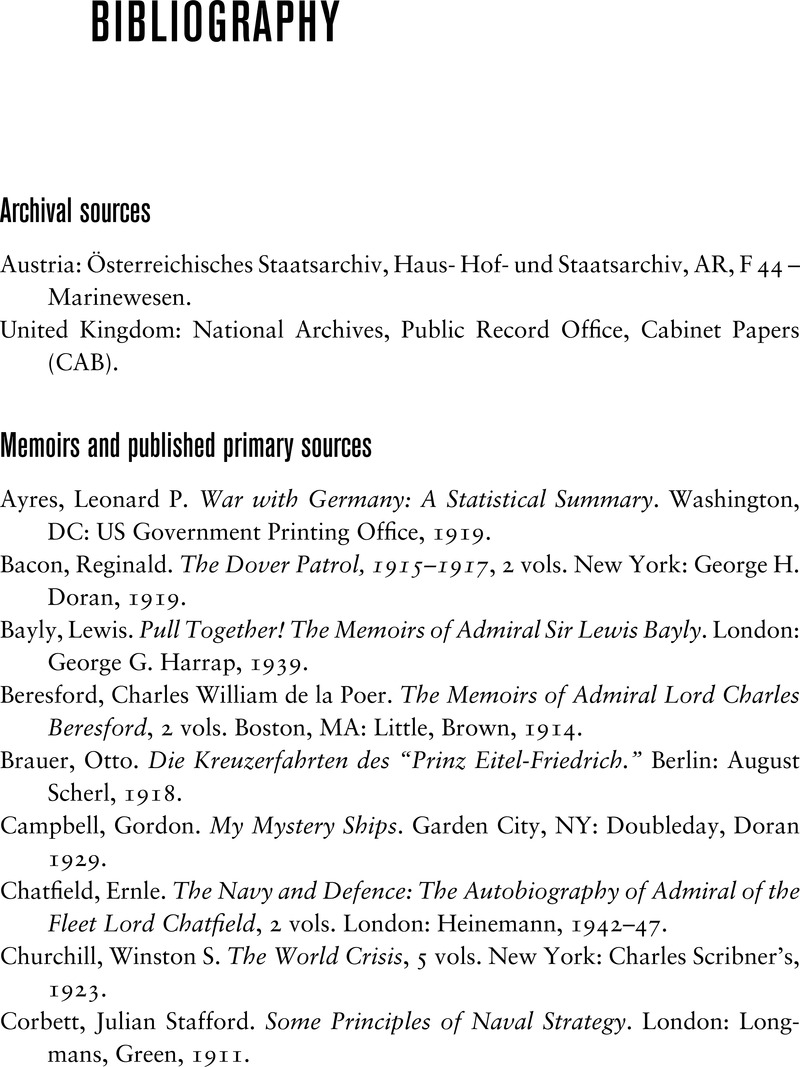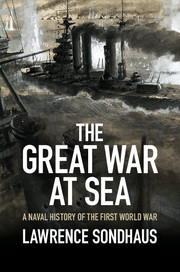Book contents
- Frontmatter
- Contents
- List of figures
- List of maps
- Acknowledgments
- Introduction
- 1 Ambition, ideology, and arms races
- 2 Preparing for war
- 3 Global prelude
- 4 European waters, 1914–15
- 5 Submarine warfare: The great experiment, 1915
- 6 Combined operations, 1915
- 7 The year of Jutland: Germany’s fleet sorties, 1916
- 8 Submarine warfare: The great gamble, 1917–18
- 9 War and revolution, 1917
- 10 Final operations
- Conclusion: Peace and naval disarmament
- Bibliography
- Index
- References
Bibliography
Published online by Cambridge University Press: 05 August 2014
- Frontmatter
- Contents
- List of figures
- List of maps
- Acknowledgments
- Introduction
- 1 Ambition, ideology, and arms races
- 2 Preparing for war
- 3 Global prelude
- 4 European waters, 1914–15
- 5 Submarine warfare: The great experiment, 1915
- 6 Combined operations, 1915
- 7 The year of Jutland: Germany’s fleet sorties, 1916
- 8 Submarine warfare: The great gamble, 1917–18
- 9 War and revolution, 1917
- 10 Final operations
- Conclusion: Peace and naval disarmament
- Bibliography
- Index
- References
Summary

- Type
- Chapter
- Information
- The Great War at SeaA Naval History of the First World War, pp. 371 - 380Publisher: Cambridge University PressPrint publication year: 2014



